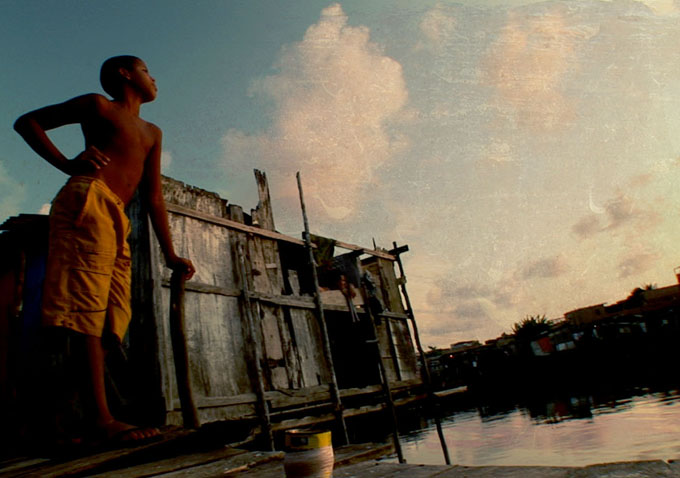 Winner of of the Documentary Feature Audience Award at SXSW, "Bay of All Saints," directed by Annie Eastman, is an affecting little gem of a documentary, a look inside a world very different from our own, in the waterfront slums of Bahia, Brazil. These slums aren't so much waterfront as they are in the water, shacks made of salvaged planks and stilts, swaying in an ocean of garbage. Known as palafitas, people have been creating homes there for 60 years, filling in the sea underneath their houses with bags of trash; creating land with refuse where there was none and then claiming it as their own.
Winner of of the Documentary Feature Audience Award at SXSW, "Bay of All Saints," directed by Annie Eastman, is an affecting little gem of a documentary, a look inside a world very different from our own, in the waterfront slums of Bahia, Brazil. These slums aren't so much waterfront as they are in the water, shacks made of salvaged planks and stilts, swaying in an ocean of garbage. Known as palafitas, people have been creating homes there for 60 years, filling in the sea underneath their houses with bags of trash; creating land with refuse where there was none and then claiming it as their own.
Our entry into this world is via refrigerator repairman Norato, a local man who has befriended the women of the palafitas by fixing their appliances. We follow his feet as he traverses from house to house via the rickety bridges made up of loose planks. The use of Norato in the film is an ingenious move by Eastman. He serves as a narrator for the film, but he's also friends with these women, a confidant who offers access to them but not in a way that feels voyeuristic or exploitative, and is a worthy vehicle for telling their story on film.
We get to know Geni and Jesus and Dona Maria, women who have made their lives in these palafitas, raised children and cooked and cleaned and earned money by washing clothes, collecting bottles or working in the beachside restaurants. Some are looking for a way out and some aren't. The palafitas are treacherous and dirty, filled with rats and bugs and liable to go crashing into the ocean at any time. But these homes are their own; they aren't beholden to any men or landlords here, they are the masters of their own domains, even with all of the problems.
In 2005, the World Bank earmarks $49 million dollars to clean up the slums in Brazil, with the palafitas community at the top of the priority list because of the environmental problems it causes with sewage in the ocean and flooding on land. The government agency CONDER wants to move the residents to housing projects on land, and the community organizes itself and elects Geni their spokesperson. However, she isn't invited to any of the meetings, and must force her way in to make her voice heard. Development on the housing project stalls for several years, and the palafitas continue to crumble at an alarming rate because the residents haven't been maintaining the stilts, thinking CONDER would move them out. Geni and the other residents finally raise their voices in protest, marching through the streets, until CONDER attempts to remedy the situation by offering rent stipends and other band-aids to cover up the problem.
"Bay of All Saints" presents these people and the world they live in through a non-judgmental lens, respecting the unprecedented amounts of access they were granted by telling their stories truthfully and with dignity. There isn't even much of the traditional documentary visual juxtaposition or ironic presentation in contrasting words with images or in the editing process. Instead, it is simply an honest exploration of this unique community and the issues that they face, while also commenting on the larger ideas of home, propriety and safety that anyone can relate to. "Bay of All Saints" utilizes this micro-community as a way to comment on larger world ideas and issues facing humanity but never in a way that is heavy-handed and forceful upon the audience or upon the people themselves, presenting them simply as they are — real people who face the same issues we do every day. [B+]

